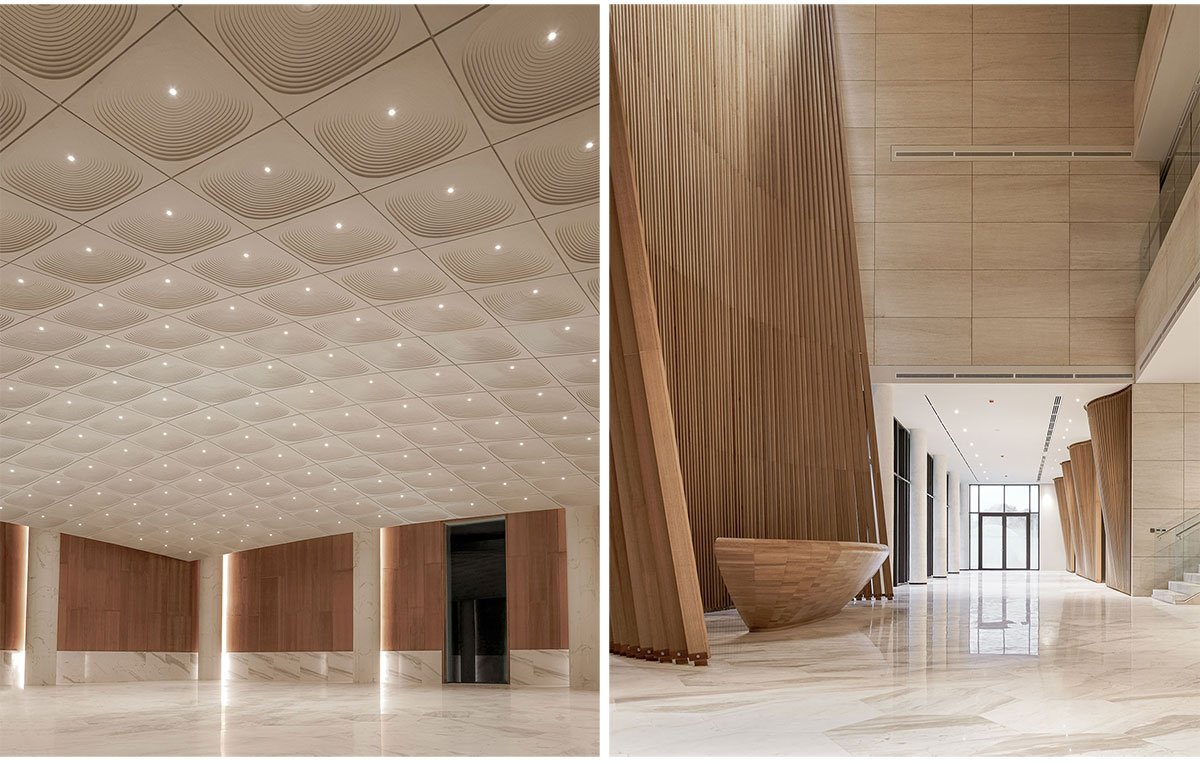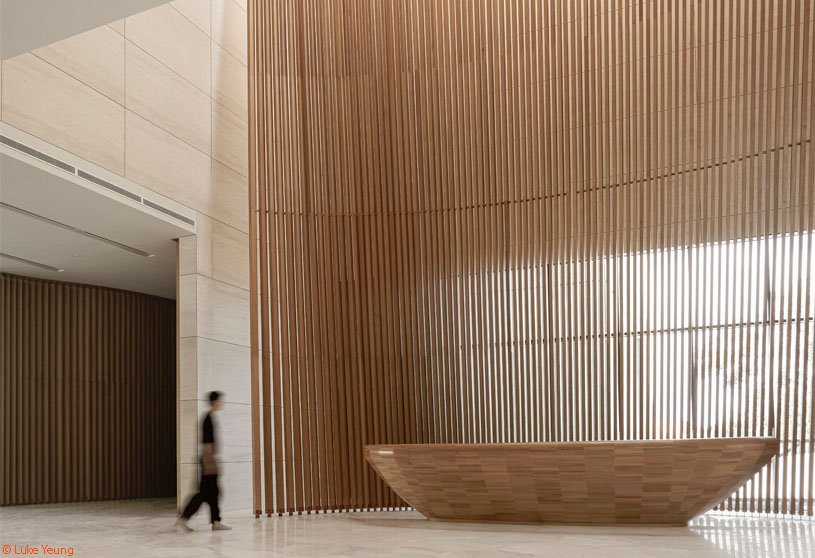Excerpt: The Embassy of the State of Kuwait, an interior design project by Architectkidd, reimagines governmental architecture through openness, fluidity, and abstraction. Avoiding overt cultural symbols, the design uses light, texture, and form to express values like cooperation and hospitality. Curved walls, sculpted ceilings, and natural materials create a civic space that feels welcoming, dynamic, and culturally engaging.
Project Description

[Text as submitted by architect] The Embassy of the State of Kuwait in Brunei is located in the Jalan Kebangsaan area in Bandar Seri Begawan. Architectkidd was selected to design the interior spaces for the Embassy by the Ministry of Foreign Affairs of Kuwait along with architecture studio Arkitek RekaJaya.


From the onset the Ministry of Foreign Affairs of Kuwait expressed their desire for the design not to overtly resemble traditional Kuwaiti or Islamic architecture. Architectkidd looked beyond direct symbolism and cultural representations and instead focused on how the design could incorporate virtues in more abstract and functional ways. We focused on values such as cooperation, openness, and engaging public spaces within the design. We expressed these values through choices in materials, details, light, and form – qualities that emphasize the role that the building environment can represent as a public institution and ‘civic cultural’ space.


The Foyer is the first experience upon entering the Kuwait Embassy. It features an atrium space with a skylight at its highest point of the atrium ceiling. To mediate between the skylight and the space below, vertical wooden louvers were designed and installed from the ceiling to the floor. The louvers are gently tilted along a sloping curvature to gradually filter and project daylight from above. Natural light integration is enhanced by the curved geometry, with the skylight aligned along the ceiling to channel daylight into the interior in a poetic way, reducing energy dependence while also imbuing the space with a sense of calm.

The Reception Hall is at the heart of the embassy, and with this new space the Kuwait Embassy is now able to curate and organize public and cultural events in Brunei. The ceiling design in the reception hall is conceived as a visually striking and crafted pattern of concentric, undulating forms that create a dynamic interplay of depth and texture. Each panel was carved from polymer in shapes that, when combined, form an acoustic-friendly, three-dimensional surface. The sculptural quality of the design adds a sense of movement to the ceiling, while the repetition of the modules ensures a harmonious and unified formal language. Integrated lighting, embedded within the recessed patterns, accentuates the detailing and provides a soft, ambient glow, enriching the spatial experience.


In other public spaces of the Embassy, the fluid design approach led to the idea to provide subtle directionality and wayfinding. Looking towards the foyer from the entrance for example, the gallery and hallways have long and rippled wood walls to guide the users’ eyes forward towards the atrium and main staircase. These curved wavy walls offer a fluid and organic form that contrasts with the geometry of the rectilinear spaces.
The materials and finishes were designed to enhance the expansive nature of the interior spaces. They were chosen because they were robust to ensure longevity and practical performance and also for their ability to enhance visual and tactile qualities of the space. The design of the finishes was key to this. The use of textured surfaces and forms such as natural wood and limestone help reflect light in subtle ways to create a sense of depth and movement. These textures enhance both the visual and tactile experience. The patterning of surfaces such as the wall panels and marble stone flooring contributes to a multi-layered interaction with the space.


The expansiveness in the interior helps to create a welcoming atmosphere and reduces the sense of confinement that might be expected. The transparent approach continues with interior sightlines and visual connections between the spaces, creating a sense of continuity in the embassy. With unobstructed views of the surrounding areas, embassy staff work mostly in natural light during the daytime hours, with artificial light reduced to a minimum.
This project redefines the perception of an embassy by moving beyond standard governmental architecture and embracing more openness, fluidity and communication. The interior aims to foster an atmosphere of engagement through its material palette and spatial composition. The design, with its intricate patterns, is layered and ever-evolving, challenging the notion that embassies must feel rigid or unapproachable. The integration of natural materials such as wood and marble, along with the soft diffusion of light, creates a welcoming environment that balances the necessary security measures with warmth and hospitality.

By softening the boundaries between formality and warmth, security and openness, the new embassy design reimagines the way a diplomatic institution can function as a cultural bridge. As embassies increasingly take on roles beyond their traditional functions, this project could set a precedent for how design can contribute to a more engaged approach towards fostering connections among nations.



























